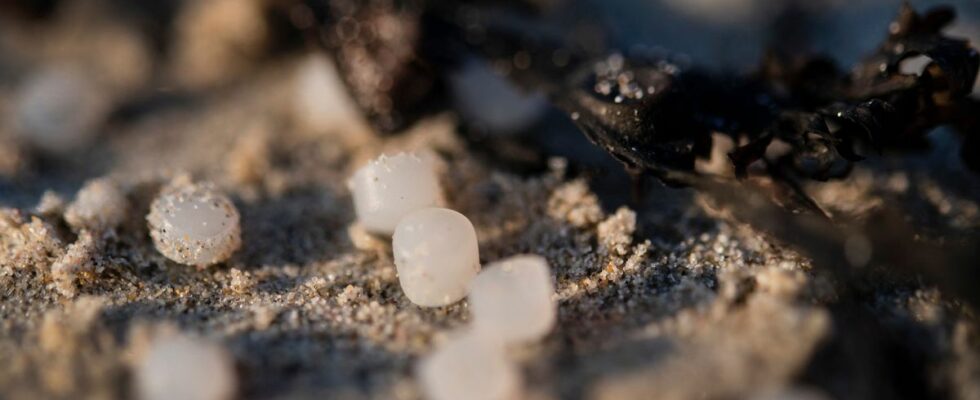It is a mysterious pollution that worries the authorities and all ocean lovers. Since the end of November, the beaches of the Atlantic coast have literally been invaded by hundreds of thousands of plastic microbeads, also called “mermaid’s tears”. After Finistère, these industrial plastic pellets have been surging en masse on the coasts of Morbihan, Loire-Atlantique and Vendée for several weeks, covering the sand as far as the eye can see.
The origin of these microbeads remains a mystery for the time being even if the most probable track is the fall of containers at sea. department of Finistère which deplores “pollution with dramatic consequences. Seized of the file, the environmental pole of the Brest prosecutor’s office will open an investigation into this pollution. 20 minutes takes stock of this strange phenomenon.
What exactly are these plastic microbeads?
Measuring less than 5 millimeters in diameter, these white microbeads are industrial plastic granules (IPG). They are used as a raw material by industry and go into the manufacture of many plastic objects such as toys, bottles or kitchen utensils. Several samples have been taken in recent days on the soiled beaches. The analyzes show that these “mermaid’s tears” are composed mainly of polyethylene, up to 90%, and do not show “any major difference in the characteristics of the GPIs taken from the sites visited”, according to the Documentation Center, of research and experimentation on accidental water pollution, based in Brest. The plastic microbeads collected for analysis also have similar composition and characteristics, suggesting a common origin. They also remained in the marine environment for a short time, according to the same source.
Where do these plastic pellets come from?
This is the question everyone is asking. For now, the mystery remains on the origin of these arrivals. However, everything suggests that these microbeads would have fallen from containers lost at sea. An accident on an industrial site could also be the cause. This dramatic phenomenon is unfortunately far from unprecedented since each year in Europe, 41,000 tonnes of industrial plastic granules, the equivalent of 11.5 billion plastic bottles, end up in the environment and in particular at sea, according to the Ministry of Ecology. In Sri Lanka, the sinking of a container ship in June 2021 released 75 billion plastic pellets, many of which washed up on shore.
What are the consequences for the environment?
The consequences of this pollution are disastrous for the marine fauna and flora. Plastic is indeed a real poison that can remain in nature for thousands of years. These pellets are often also ingested by marine animals and can then end up in human food. Because of their small size, picking them up is also difficult because they mix with the sand or fly away with the wind. And given the amount of microbeads that have washed up on the beaches, the task promises to be endless.
Have legal proceedings been initiated?
The search for the polluter(s) does not look simple. While waiting to identify those responsible for this ecological disaster, the filing of complaints against X is increasing. After the State, the Pays de la Loire region and several municipalities in Loire-Atlantique, the Finistère departmental council and the Brittany region also decided on Friday to take legal action. “We cannot tolerate this pollution which destroys biodiversity, which will have disastrous consequences for all Finistère fishing and which destroys our coasts”, indicates in a press release Maël de Calan, president of the departmental council of Finistère. Seized of the file, the environmental pole of the Brest prosecutor’s office will open an investigation, which should be entrusted to the maritime gendarmerie of the Atlantic.

